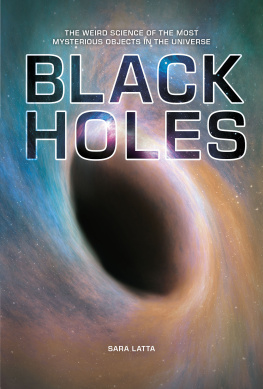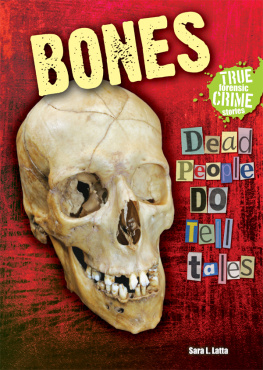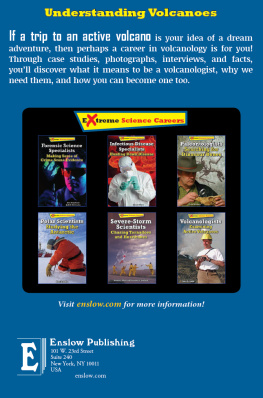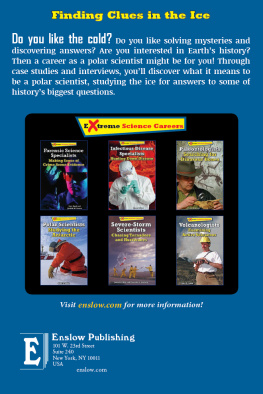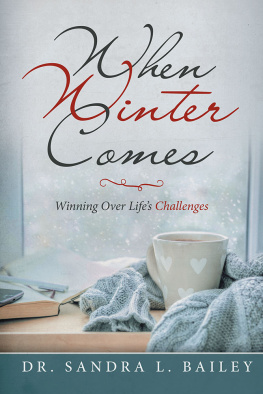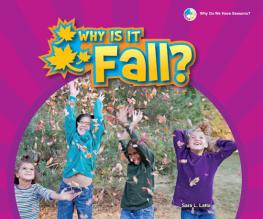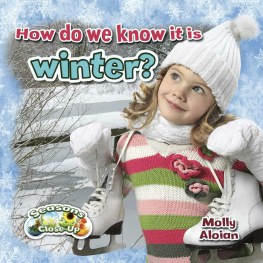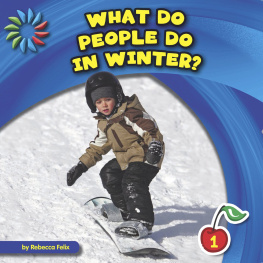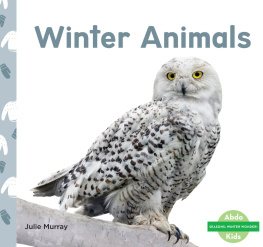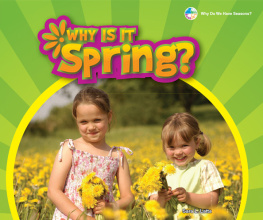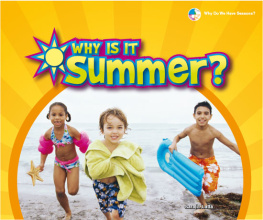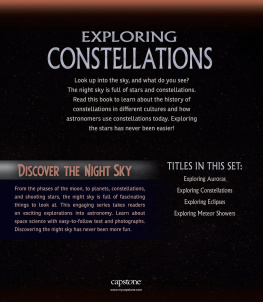When is the winter season? Why is winter weather cold? What do plants and animals do in the winter? Learn the answers to these questions, and many others, as you start learning about the seasons.
Series Literacy Consultant
These books for new readers make science easy to read about and fun to explore!
Allan A. De Fina, PhD, Past President of the New Jersey Reading Association Professor, Department of Literacy Education, New Jersey City University
Science Consultant
These fact-filled books show how much fun it can be to learn about weather.
Harold Brooks, PhD, Meteorologist NOAA/National Severe Storms Laboratory, Norman, Oklahoma
Note to Parents and Teachers:
The Why Do We Have Seasons? series supports the National Science Education Standards for K4 science. The Words to Know section introduces subject-specific vocabulary words, including pronunciation and definitions. Early readers may need help with these new words.
About the Author
Sara L. Latta writes about science and medicine from her home in Illinois. She has a BA in Microbiology from the University of Kansas, an MS in Immunology from the University of Chicago, and recently earned her MFA in Creative Writing from Lesley University.

pollen (PAHL ehn)-Tiny grainsmade by flowers that allowseeds to grow into new plants.
tilt (TIHLT)-To tip to one side.Earth tilts as it goes aroundthe sun.
Brrr-bundle up! It is winter, the coldest time of the year. Winter is one of the four seasons. The other seasons are spring, summer, and fall.



Image Credit: Photos.com, a division of Getty Images

Image Credit: Photos.com, a division of Getty Images
The earth goes around the sun one time each year. Earth tilts as it goes around the sun.

Image Credit: Photos.com, a division of Getty Images
When the North Pole tilts away from the sun, it is winter in North America.
The north part of Earth tilts away from the sun in winter. So, the suns rays hit this part of Earth at an angle.

Image Credit: Photos.com, a division of Getty Images
Earth gets fewer hours of sunlight in the winter. Less sunlight makes the air, water, and land get colder. When water is very cold, it freezes.
In the winter, water in the clouds can freeze into tiny ice crystals. The ice crystals form snowflakes. Water on lakes and ponds may also freeze in the winter.

Image Credit: Photos.com, a division of Getty Images
In the coldest parts of North America, trees and other plants may stop growing during the winter. They are resting. Their leaves may fall off. Plants live off the food they store in their roots.

Image Credit: Photos.com, a division of Getty Images

Image Credit: Photos.com, a division of Getty Images
There are not many growing plants for animals to eat in the winter. Some animals go to warmer parts of the earth where there is plenty of food.

Image Credit: Photos.com, a division of Getty Images

Image Credit: Photos.com, a division of Getty Images
Bears and other animals spend much of the cold winter months curled up in dens. They enter a deep sleep called hibernation.

Image Credit: Photos.com, a division of Getty Images
They live off the fat they have stored in their bodies. When they come out of their dens in the spring, they are hungry!

Image Credit: Photos.com, a division of Getty Images
Winter snow brings winter fun. If you live in a part of the country where it gets cold, you may go sledding or ice skating. You may build a snowman. Sometimes school is closed!

Image Credit: Photos.com, a division of Getty Images

Image Credit: Photos.com, a division of Getty Images

Image Credit: Photos.com, a division of Getty Images
You will need:
- 2 ice cubes
- 2 bowls or cups
- salt
- clock or watch
Step 1) Put one ice cube in each bowl.
Step 2) Pour some salt over one ice cube. Add nothing to the second ice cube.
Step 3) Check the ice cubes every ten minutes. Which ice cube melts the fastest? Can you guess why people put salt on the streets and sidewalks in the winter?
Fleming, Denise. The First Day of Winter. New York: HenryHolt and Company, LLC, 2005.
McKneally, Ranida T. and Lin, Grace. Our Seasons.Massachusetts: Perfection Learning, 2007.
Smith, Sian. Changing Seasons. Illinois: Heinemann-Raintree,2009.
Enchanted Learning
Creative and enchanting children's crafts for all seasons.
Primary Games
This web site offers a fun and interactive way to learn the four seasons.


